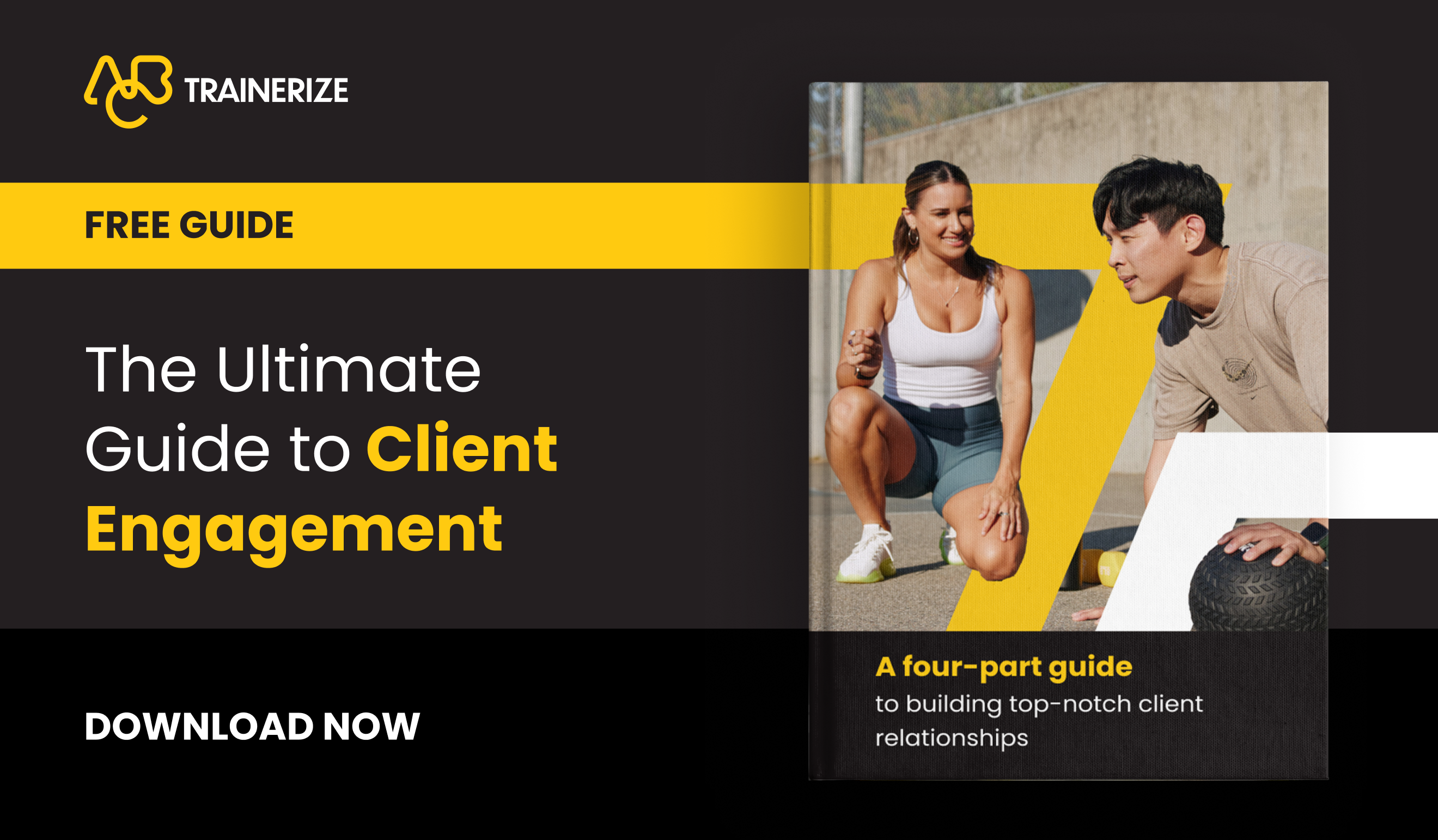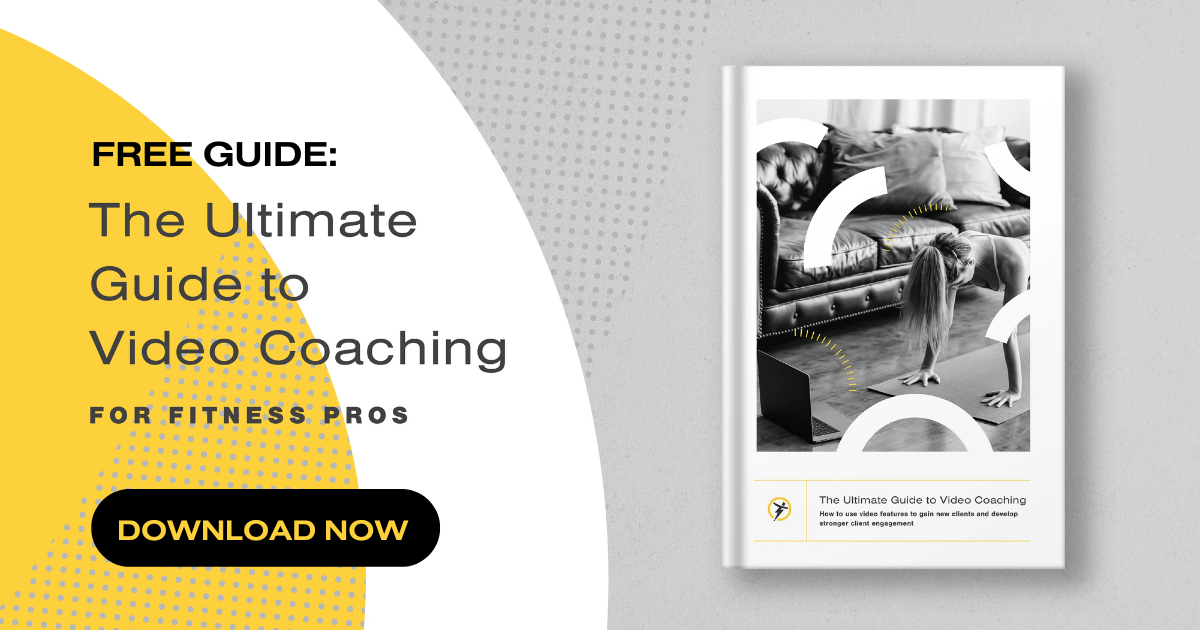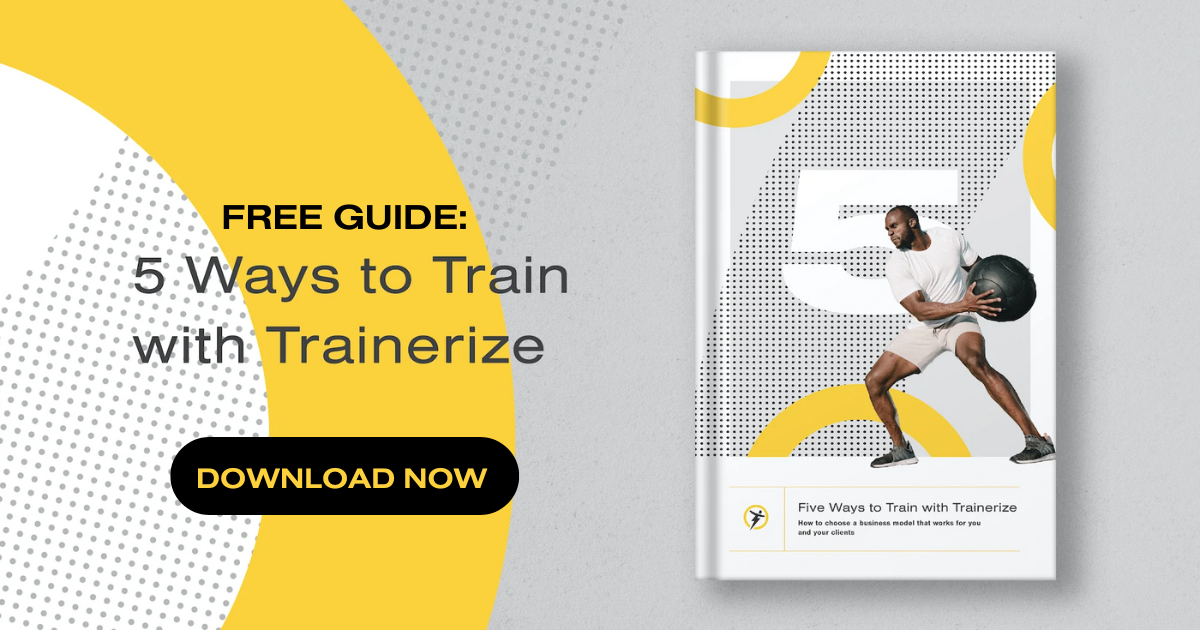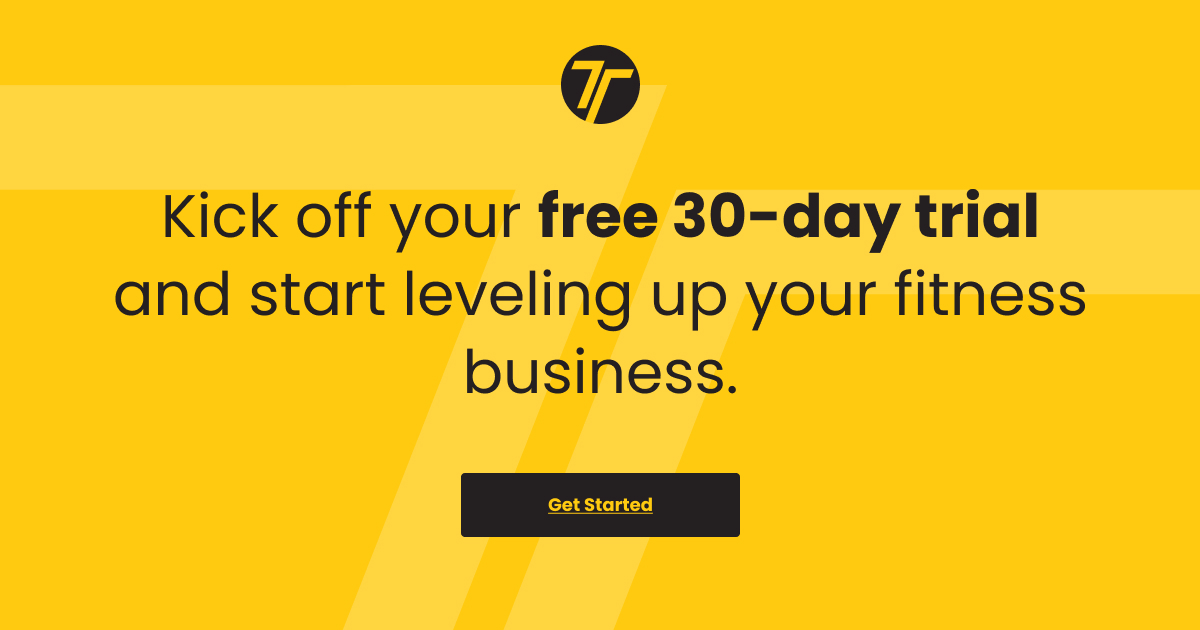Looking for 30 minute personal training session ideas for your clients? We’re breaking down 21 ideas in this article.
Personal training isn’t always hours of hardcore-parkour fitness. Frequent, shorter rounds of exercise go a long way, and that’s why many trainers have started leading basic 30-minute workouts. Offering half-hour fitness sessions allows you to cater to clients who don’t have the time or fitness level for longer sessions and in turn, that means WAY more potential clients for your training roster.
Now, if you’ve only offered longer training sessions ‘til now, don’t worry. Here, we’ll break down the whole strategy behind 30-minute fitness, how to price shorter training sessions, and a slate of 30-minute personal training session ideas you can steal for yourself. Soon, you’ll have a valuable new approach to training to offer your fitness clients—and we love that for you.
Why do clients need a 30-minute model?
For many clients, 30-minute workouts strike the perfect balance between fitness results and accessibility. You might not have time in your busy schedule for a full-hour workout, but 30 minutes? Everyone can fit that in somewhere, no matter how hectic their career is.
Similarly, many people fall out of a regular fitness routine, and need to tip-toe their way back into the gym. Shorter sessions feel less intimidating, and they work the exact same muscles. Personal trainers that offer 30-minute sessions create a crucial stepping stone to regular athletics for many potential clients. That’s both powerful for them and good for your business.
Strategies for pricing your 30-minute workouts
Your 30-minute workouts should cost slightly more than half the price of your full-hour workouts. Suppose you normally charge $80 for a full hour of training. You could price a half-hour at $50, a 45-minute session at $65, and then the full hour at your regular rate.
This means your clients have a financial incentive to book longer training sessions, and allows you to pass savings onto the most dedicated athletes you work with. Increased pricing for shorter sessions also helps you reach your target earnings—even if you’ve got more 30-minute workouts than full-hour ones.
🔗 Ready to make your first sale?
Get Your First Sale In 30 Days!
21 ideas for your 30-minute personal training sessions
Looking for fresh ideas to fill out your 30-minute training sessions? We’ve got you covered. Stealing ideas isn’t just allowed, either—we actively encourage it.
Warm-ups
Take five minutes at the beginning of each 30-minute workout to warm up properly. Your client’s muscles and joints all thank you in advance.
1. Jump-rope
Grab a skipping rope and start your session off with two minutes of skipping. You’ll get clients’ heart rates pumping and their muscles ready for action.
2. Jumping jacks
Jumping jacks are a classic plyometric exercise. They’re great cardio, and they get your glutes, quads, and hip flexors ready for more targeted exercise.
3. Body weight squats
Many leg exercises are intense, so warm up with just your body weight. A minute of these will kick your glutes and quads into high gear;.
4. Lunges
Lunges provide gentle resistance and strengthen your back, legs, and hips. These are extremely popular among runners and sprinters, ‘cause they help you improve your start times.
5. Forward leg swings
Stand on one leg (or alongside a support wall) and swing one leg from front to back. Focus on increasing your range of motion, and watch this dynamic exercise wake your sleepy hips up.
6. Lateral leg swings
Bring one leg in front of the other, then slowly swing the front leg across and out to activate your hips and thighs.
7. Push ups
When it comes to upper body warm-ups, you can’t go wrong with push-ups. They activate your chest, abs, triceps and delts, and you can adjust the intensity to match any client’s fitness level.
Strength exercises
These compound strength training exercises are all-time classics. They can all be performed with dumbbells, to make transitions in your circuit take as little time as possible:
1. Squats
Who doesn’t want a beauteous gluteus? Grab some weights and hit a few sets of squats to work your clients’ whole legs.
2. Deadlift
Deadlifts work everything from your legs, to your back, to your grip strength. They’re the compound exercise to end all compound exercises, and perfect for short workouts.
3. Romanian deadlifts
Romanian deadlifts put extra focus on often-neglected hamstring muscles. With dumbbells or a weighted bar, add a slight bend in the knees and lower the weight until just below your hips—before driving your hips forward to return upright.
4. Chest press
Everyone’s favorite upper body exercise. Grab dumbbells or a bar and spot your clients while they blast their pecs, deltoids, and triceps. Soon, your clients will have to turn sideways to squeeze through doorways. (We joke, but this is great for chest strength.)
5. Chest fly
Snag an open bench and bring your dumbbells. With your elbows slightly bent, raise and lower the dumbbells in a fly to work your pecs and triceps. Fly and press movements are similar but not identical, so working in both is smart.
6. Shoulder press
Shoulder press targets your shoulder muscles, but it’s also a compound exercise for your chest and triceps. Encourage clients to focus on form over weight, ‘cause they may be tempted to grab bigger dumbbells too early.
Cardio training:
Cardio exercises rev your heart into high gear, melt fat and tone multiple muscle groups at once. Work some of these equipment-free cardio exercise into your 30-minute circuit to get your clients sweating:
1. High knees
Hup, hup, hup! Fix your elbows at hip height, hold your hands out, and raise your knees to tap them.
2. Butt kicks
Engage your core, and then lift your heels (one at a time) until you kick your own glutes. Challenge your clients to complete as many reps as they can in one minute to get them working hard.
3. Squat punches
Standing in a wide-leg squat, hold your fits in front of you, then punch side-to-side at a 45-degree angle. You’ll activate clients’ upper and lower bodies and get their heart rates up, too.
4. Heismans
With your feet placed just outside your hips, lift one leg towards your chest—as you bend the opposite arm in front of you. Switch it, repeat it, and watch as your clients work it.
Cool-down stretches
Stretching after workouts is absolutely vital. Throw some of these stretches in the mix (as well as some foam rolling) to help your clients avoid injuries and post-workout soreness.
1. Standing side reach
With your feet together, lift one arm in the air while leaving the other at your side. Bend at the waist towards the lowered arn, and feel a stretch ripple through the opposite hip.
2. Cat-cow stretch
Start out on all fours. Breathe in and tilt your pelvis back like a big old cow, then breathe out and tuck your tailbone in like a grumpy cat. It sounds silly, but arching and rounding your spine is effective for preventing back injuries.
3. Standing quad stretch
Balance on one leg, then grab the other leg with one hand and raise your heel to your glute. Gently push your hip forward until you feel a stretch, hold it, then switch sides.
5. Standing figure four
While standing on one leg, cross your lifted ankle over the opposite thigh. Bend the knee you’re balancing on, and sit back until you feel a stretch through your thigh.
FAQs about the 30-minute fitness model
Are 30-minute training sessions effective?
Yes, absolutely. Short, high-intensity workouts can deliver the same health benefits as longer, lower-intensity ones, and help your clients fit fitness into their busy schedules. Put another way: the Physical Activity Guidelines for Americans suggest 150 minutes of exercise per week…and that’s just five 30-minute workouts.
Should I design more than one 30-minute exercise routine?
With short workouts, cross-training is key (so yes). You’ll want to develop several 30-minute routines, incorporating aerobic exercise, strength training, calisthenics, and stretching—among other things. That variety is key for helping your clients build full-body fitness.
Why are 30-minute workouts good for my training business?
Offering shorter workouts allows you to cater to busy professionals, cost-sensitive athletes, and people of diverse fitness levels. This means you’ll have a busier client roster, and many of those 30-minute training clients will upgrade to longer training sessions. (Plus, you can charge slightly more per-the-minute for shorter sessions.)
So, what’s next?
Now that you know how to design and price 30-minute training sessions, you’ll probably want to start planning your own. That’s where Trainerize comes in.
Our platform makes it easy to create custom workouts and share them with training clients before each session, so you can make every half-hour count. You’ll also have one-click access to client information inside Trainerize, and the power to deliver premium services like meal plans and online training.
More ways to train clients means more ways to scale your fitness business—and who doesn’t want that?





